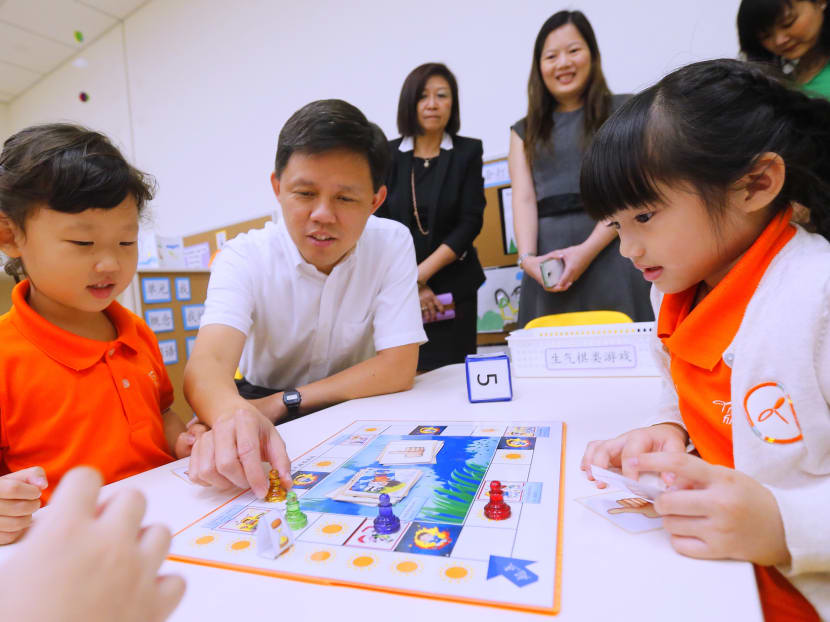My First Skool to take in over 2,000 more children by year-end
SINGAPORE — NTUC’s My First Skool will be ramping up its childcare network to meet the needs of young working families in Singapore, aiming to increase enrolment from 13,000 to 20,000 by 2020.

Secretary-General of the National Trades Union Congress (NTUC) Chan Chun Sing at the official opening of the newest MFS centre at Punggol Waterway Point on March 15, 2016. Photo: Ernest Chua/TODAY
SINGAPORE — NTUC’s My First Skool will be ramping up its childcare network to meet the needs of young working families in Singapore, aiming to increase enrolment from 13,000 to 20,000 by 2020.
This will represent a nearly 50 per cent increase over a five-year period, Mr Chan Tee Seng said. The chief executive of NTUC First Campus, which manages My First Skool, was speaking at the opening of the newest centre at Punggol Waterway Point on Tuesday (March 15), adding that it is also looking to recruit more teachers for the new centres.
There are 123 My First Skool branches today, having grown from 39 in 2009 and serving four times the number of parents now. The centre at Punggol Waterway Point is the first of several large preschools to be opened by the end of this year, especially in developing estates such as Jurong West, Punggol and Sengkang, each of which can take in about 200 to 500 children.
Another upcoming centre at Edgefield Plains in Punggol will open by mid-2016, while two preschools in Jurong West and Sengkang West will begin operations in the third quarter of the year. The one at Sengkang is set to be the biggest of the network’s preschools, catering to about 500 children.
Mr Chan Chun Sing, Secretary-General of the National Trades Union Congress (NTUC) who was also at the centre opening, remarked: “I never understood why we used to constrain ourselves with the void-deck structure, where we have small centres at a capacity of about 50 to 100 … we couldn’t pilot or try new ways of doing things ... Now there is the opportunity for us to explore new concepts.”






